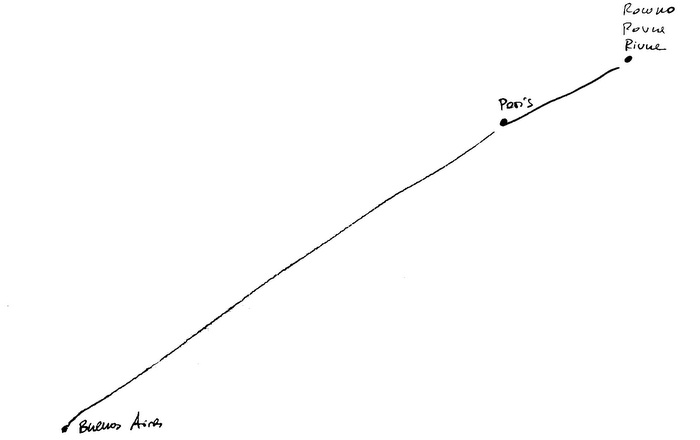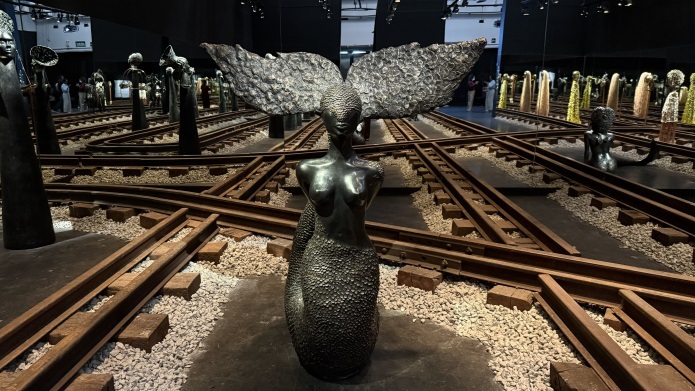Yan Pei-Ming (Shanghai, 1960) describes himself as an artist “who has roots but mainly wins” In the exhibition titled “No comment” the public will have the opportunity to see 26 works by the French artist and that it will be exhibited for the first time a as solo exhibition in a Spanish museum. His paintings, most of them of large format, are characterized by thick and violent strokes on the canvas besides using just a few colors like white, white and black, and red. He paints portraits on personalities related to politics, economy, religion, and also paints unknown people and anonymous people.
For CAC Málaga director Fernando Francés: “(…) Yan Pei-Ming is able to show nonconformities and universal realities through his painting. In some occasions, he disguises his portraits as historical characters or paints portraits related to homonymous people. This artist gives a new order to the traditional convictions on the painting. His violent strokes on the canvas seems to be a perfect excuse to refuse everything he hates, he wants to remove or eliminate, bringing outside from which he wants to escape. In a brilliant way and with just a few resources, he evokes a complex art full of artists and interpretations. Death is a kind of obsession in is work. This subject has been reflected in History, Philosophy, and Literature manuals, and it the case of the Plastic Arts, it has been also treated from the first paintings and sculptures in the ancient time to the present times. For Yan Pei-Ming, this is not a tragedy. Under this premise, he bravely adventures to portrait no life faces. In some cases, his portraits are about unknown people, in others, they are anonymous people (Chambre froide, 2003), and even he has painted the portrait of his dead father (Père de l’artiste à la morgue, 2004)”.
Despite his origins, he tries not to be labeled as an artist with influences on some country or specific cultures. In fact, he had to leave his homeland in 1980 for his dream of being painter became true. So, he moved to France when he was 20. From that moment, he started to research about the possibilities of the painting in the current context and reinvent the portrait as a way to capture the essence of the represented persons. He decided to get away from colors for not to distract the viewer’s look and this way to achieve attracting their senses. Works like Exécution, après Goya (2008) reinterpret the popular work by Spanish painter El tres de mayo de 1808 en Madrid, (1814), but using this time elements like red color, one the violent colors, according to the artist’s definition.
In fact, the references to the Spanish painter are the artist’s homage to Goya. Both are like chroniclers in difficult times, showing in some cases, the less pleasant and known part related to the past and recent history they have lived like the current war conflicts (Char, 2013) and the economic crisis (Portrait de Bernard Madoff, 2009). Yan Pei-Ming thinks that through his painting these kind of problems are more visible plus others from the current situation some countries are living because of constant wars like it is the case of the portraits of orphan children who are victims of such conflicts (Lebanese Child, 2006).
Yan Pei-Ming has resorted to the figure of Mao Tse-tung as a character that has been part of his everyday life since he was a child. On the point of death and related to the autobiographic themes, the artist has painted his father dead and even his self-portrait also appears dying or in works in which he seemed to be crucified. Death is a recurrent theme in his work, as something inevitable and on which no one can escape.
Religion is also a matter the painter reflects in his work. Besides crucifixion, portraits of different Popes as main and visible figures in the Catholicism are other kind of works in which he reflects his view on this religion. The Pape (2004) work, which does not refers to any Pope in particular, will be exhibited at the Malaga Cathedral by the artist’s express wish.
Yan Pei-Ming was born and grew up in Shanghai and he moved to France in 1980. He studied at the Ecole Nationale Des Beaux – Arts de Dijon. Some of his important recent exhibitions include Childhood Landscape, UCCA, Beijing (2009); Les Funérailles de Monna Lisa, at the Musée du Louvre, París (2009); Yes, San Francisco, California (2009); Yan Pei-Ming with Yan Pei-Ming, GAMeC, Bérgamo (2008); Life Souvenir, Des Moines Art Center, Iowa (2008); You maintain a sense of balance in the midst of great success, David Zwinner, Nueva York (2007); The Yan Pei-Ming Show, Galleria Massimo De Carlo, Milan (2007); Execution, Musée d’Art Moderne, Saint- Etienne (2006), among others. He has also participated in many collective exhibitions such as Moi-Autoportraits du xxe siècle, Musee du Luxembourg, Paris (2004); New Zone-Chinese Art, Zacheta National Gallery of Art, Warsaw, Polonia (2003); The Biennial of Venice (in 2003 and 1995), and at the Biennial of Lyon (in 2000 and 1997). He lives and works between Dijon and Ivry-sur-Seine.
From March 20 to June 14, 2015














